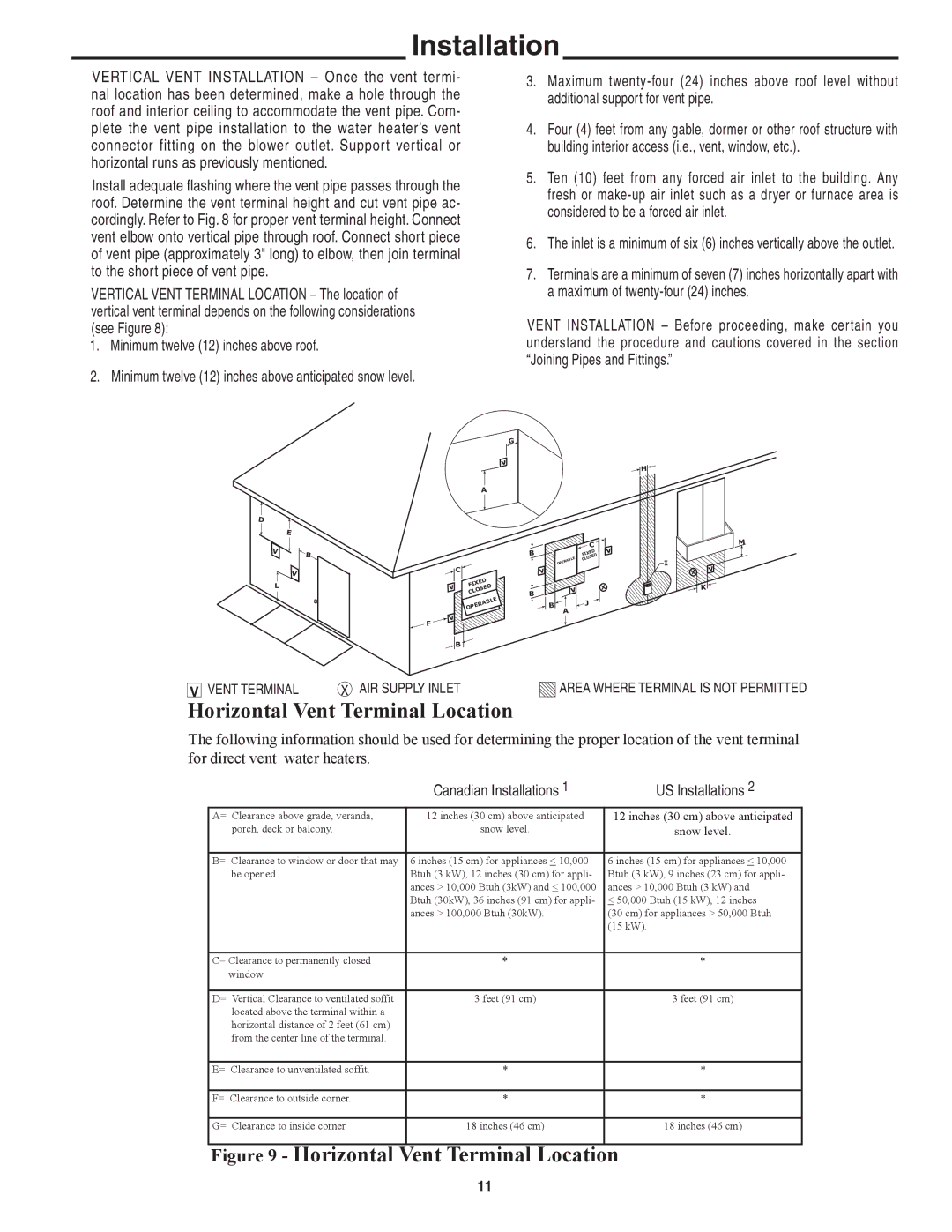Commercial Power Direct Vent Water heater specifications
The Rheem Commercial Power Direct Vent Water Heater is engineered to meet the demanding needs of commercial applications, providing reliable and efficient hot water for various business environments. With a focus on performance, efficiency, and durability, this water heater stands out in the competitive landscape of commercial water heating solutions.One of the key features of the Rheem Commercial Power Direct Vent Water Heater is its direct vent capability. This innovative design allows for installation in confined spaces while optimizing exhaust methods. The direct vent system enables the heater to draw air from outside the building for combustion, ensuring safe operation, reducing risk of backdraft, and maintaining indoor air quality.
The water heater is powered by either natural gas or propane, accommodating diverse fuel supply preferences. With a range of storage capacities, it can cater to small and large businesses, from restaurants to industrial facilities. The product’s high recovery rate ensures that it can meet peak hot water demands, making it an ideal solution for facilities with fluctuating hot water usage.
Equipped with advanced technology, the Rheem Commercial Power Direct Vent Water Heater features a state-of-the-art electronic control system that allows for easy temperature adjustments and monitoring. This interface ensures precise temperature control, so businesses can consistently deliver hot water at the required temperatures.
Durability is a hallmark of this water heater, which incorporates premium-grade components and materials. The tank is constructed with a glass-lined steel design that enhances resistance to corrosion, while also supporting longevity. Additionally, it features robust insulation that reduces heat loss, improving energy efficiency and lowering operating costs.
Another notable characteristic is the inclusion of a high-efficiency burner that maximizes fuel utilization, promoting energy savings and reducing emissions. The heater also complies with various energy standards, making it a sustainable choice for environmentally conscious businesses.
Installation and maintenance are streamlined with the Rheem Commercial Power Direct Vent Water Heater. Its compact design and versatile venting options allow for flexible placement. Furthermore, the unit is designed for easier access to critical components, making routine service and maintenance uncomplicated.
Overall, the Rheem Commercial Power Direct Vent Water Heater represents a fusion of efficiency, ease of use, and advanced technology, making it a smart investment for commercial establishments needing reliable hot water solutions. Whether in kitchens, manufacturing plants, or commercial offices, this water heater is engineered to deliver performance and peace of mind.

